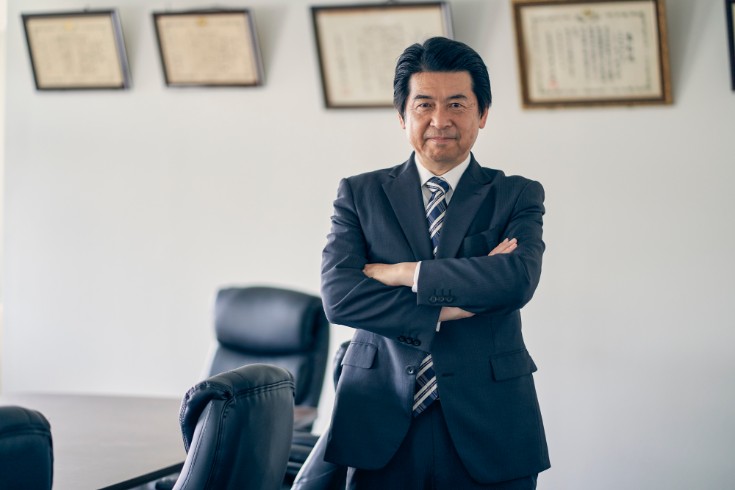Administrative Remedies for Unfair Labor Practices in Japan: A Strategic Guide for Managers

In operating a business in Japan, understanding the legal system that governs labor law, especially the relationship with labor unions, is essential. Article 28 of the Japanese Constitution guarantees workers the right to organize, to bargain collectively, and to act collectively. To substantively protect these constitutional rights, the Japanese Labor Union Law prohibits certain acts by employers as “unfair labor practices.” Unfair labor practices are not merely violations of regulatory compliance; they pose a significant risk factor that directly impacts a company’s reputation, labor relations, and ultimately the stability of its management.
When a labor union or employee alleges that an unfair labor practice has occurred, the dispute is handled through a unique administrative relief procedure aimed at professional and swift resolution, different from general civil litigation in courts. This procedure is primarily led by an administrative body called the “Labor Commission.” The system has a three-tier structure: the first-instance procedure, the review procedure, and administrative litigation, each with its own rules and strategic considerations. The first-instance procedure is handled by the Prefectural Labor Commission, which is the most crucial stage that lays the foundation for the entire process by determining the facts and making the initial judgment. If a party is dissatisfied with this decision, they can apply for a review to the Central Labor Commission. Ultimately, there is the possibility of moving to administrative litigation to contest the validity of the Labor Commission’s order in a judicial setting. Understanding this series of processes is the first step in taking appropriate and strategic action when a dispute over unfair labor practices arises. This article will provide a detailed explanation of each stage of the three-tiered administrative relief procedure from the perspective of management, outlining the overview, key points, and legal risks at each stage.
Types of Unfair Labor Practices Managers in Japan Must Understand
Article 7 of the Japanese Labor Union Law specifically defines unfair labor practices that employers must not engage in. Accurately understanding these types is extremely important from the perspective of preventive legal measures.
Adverse Treatment and Yellow Dog Contracts Under Japanese Labor Law
Article 7, Item 1 of the Japanese Labor Union Act prohibits the dismissal or other adverse treatment of workers on the grounds that they are members of a labor union, have attempted to join a labor union, have attempted to form a labor union, or have engaged in legitimate union activities. The term “adverse treatment” here includes any measures that negatively impact the worker’s status or conditions, such as dismissal, demotion, pay cuts, or disadvantageous reassignments. For instance, acts such as firing an employee who led the formation of a labor union or excluding someone from pay raises because they participated in a strike fall under this category.
Furthermore, the same provision also prohibits “yellow dog contracts.” These are agreements that condition employment on a worker not joining a labor union or withdrawing from one. A typical example is requiring a pledge at the time of hiring that the employee will not join a labor union.
Refusal of Collective Bargaining Under Japanese Law
Article 7, Item 2 of the Japanese Trade Union Law prohibits employers from unjustifiably refusing to engage in collective bargaining with the representatives of their employees. This provision targets not only the act of outright refusal to sit at the negotiation table but also insincere collective bargaining, where an employer may formally comply with the negotiation process while substantially failing to engage in earnest discussions.
Actions that could be deemed insincere in collective bargaining vary widely. For instance, it includes unjustifiably refusing to disclose financial information necessary for wage negotiations, sending representatives without the authority to negotiate, repeatedly responding with “We will consider and get back to you,” or continually delaying negotiation dates under the pretext of being too busy. The law requires not the reaching of an agreement but a sincere effort towards consensus-building. This requirement of “sincerity” includes subjective elements, and even responses that an employer considers reasonable may be objectively assessed as insincere, carrying the risk of such evaluation. Therefore, meticulous record-keeping, such as creating minutes of the negotiation process and providing concrete reasons for responses, is crucial to objectively prove sincere engagement. In the ExxonMobil case (Tokyo High Court, March 14, 2012), insincere collective bargaining was deemed a tort, and the company was ordered to pay damages to individual union members. This is a significant precedent demonstrating that insincere collective bargaining can lead to monetary compensation liabilities, not just remedial orders from the Labor Relations Commission.
Control Interference and Financial Assistance Under Japanese Labor Law
Article 7, Item 3 of the Japanese Labor Union Law prohibits employers from controlling or intervening in the formation and operation of labor unions (control interference), as well as providing financial assistance for the management of labor unions (financial assistance). This is intended to ensure the autonomy of labor unions and to establish an equal labor-management relationship independent of the employer’s influence.
Specific examples of control interference include a company supporting the formation of a particular labor union while making hostile statements against other unions, intervening in the election of union officers, encouraging employees to withdraw from the union, or conducting surveys on employees’ participation in union activities. In the Prima Meat Packers case (Tokyo District Court judgment on May 21, 1976 (Showa 51)), the president’s statement criticizing the attitude of the union’s executive committee was judged to be control interference that hindered the solidarity of the union.
Regarding financial assistance, there are exceptions that are permitted, such as providing a union office of minimal size. However, assistance that affects the finances of the union and impairs its autonomy is prohibited.
Retaliatory Disadvantageous Treatment Under Japanese Law
Article 7, Item 4 of the Japanese Labor Union Act prohibits employers from treating employees unfavorably because they have filed a complaint for unfair labor practices with the Labor Relations Commission or have provided evidence or testimony during the Commission’s investigations or hearings. This provision ensures that workers can utilize the relief procedures offered by the Labor Relations Commission without hesitation.
Preliminary Proceedings: Examination at the Prefectural Labor Commission in Japan
In Japan, the relief procedures for unfair labor practices generally begin with the preliminary proceedings at the jurisdictional Prefectural Labor Commission. This stage is the most critical phase of the entire process, where the facts of the dispute are established, and the initial legal judgment is made.
Filing a Petition and the Employer’s Initial Response
In Japan, a labor union or worker initiates the procedure by submitting a petition for relief to the Labor Commission within one year from the date of the alleged unfair labor practice. Upon accepting the petition, the Labor Commission sends a copy to the employer (respondent) and requests the submission of a written response.
This written response is the employer’s first and extremely important document in their defense activities. In the response, the employer must clearly state whether they admit (consent), deny (dispute), or are unaware (do not know) of each fact claimed by the petitioner. Furthermore, the employer must specifically argue the legal basis for why their actions do not constitute an unfair labor practice and the facts that support the legitimacy of their actions. The claims and counterarguments presented here will form the issues for subsequent investigations and hearings. Therefore, the preparation of the response should be strategic and based on legal expertise.
Investigation and Hearing
Once the response is submitted, the case moves into the investigation phase. The investigation is usually conducted in private by a panel consisting of public interest members, worker members, and employer members. At this stage, the parties’ claims are organized, evidence is reviewed, and issues are clarified. Towards the end of the investigation, a “review plan” is typically formulated, outlining the conduct of the hearing, the number of witnesses, and the timing of orders.
After the investigation, if there is a gap between the parties on the issues, the procedure moves to a hearing. Similar to a courtroom, the hearing is conducted publicly in principle, where evidence is examined through questioning of the parties and witnesses. Witnesses are obligated to testify under oath, and both parties’ attorneys conduct direct and cross-examinations. The testimony and evidence obtained during this hearing will form the basis for the Labor Commission’s factual findings.
The preliminary proceedings are not merely the first round. The record of facts and evidence constructed here will serve as the foundation for later reviews and administrative litigation. It is often difficult to present new evidence at later stages, and a defeat in the preliminary proceedings can be very challenging to overturn. Therefore, it is essential for companies to invest maximum legal resources from the preliminary stage and adopt a strategy of thorough argumentation and proof.
Orders or Settlement
When the hearing concludes, a collegiate body led by the public interest members convenes to determine whether the employer’s actions constitute unfair labor practices.
If the facts of unfair labor practices are established, the Labor Commission issues a “relief order.” The content of the order varies depending on the case but may include orders such as reinstatement of the dismissed union member to their original position, consent to collective bargaining, cessation of actions infringing on the union’s autonomy, and the posting of a document (post-notice) within the company promising not to repeat similar actions in the future.
If the facts of unfair labor practices are not recognized, a “dismissal order” is issued, and the petitioner’s claims are rejected.
Furthermore, at any stage of the review procedure, the Labor Commission may encourage both parties to settle. If a settlement is reached, the case concludes there. Settlement can be an effective option to avoid the prolongation of disputes and to repair labor-management relations.
Reassessment Procedures: Filing an Objection with the Central Labor Relations Commission in Japan
Parties dissatisfied with the orders of the prefectural labor commissions in Japan, whether from the employer’s side or the labor union’s side, can file for a reassessment with the Central Labor Relations Commission. This provides an opportunity for review by a higher administrative body within the system.
The most critical aspect of this procedure is the short window for filing an objection. The application for reassessment must be made within a mere 15 days, starting from the day after receiving a copy of the order. This period is strictly enforced, and any application made even one day late will be dismissed as invalid. Therefore, companies that receive the initial order must immediately analyze its contents and swiftly decide whether to file for reassessment.
The reassessment procedure is often based on the records submitted during the first hearing (written statements, evidence, hearing transcripts, etc.). The Central Labor Relations Commission examines whether the first instance’s decision was reasonable in terms of fact-finding and legal interpretation. The submission of new evidence and independent investigation or inquiry is also permitted, allowing for a reexamination of both facts and law. As a result of the review, the Central Labor Relations Commission may issue an order to uphold, modify, or annul the initial order. Even at this stage, the path to resolution through settlement remains open.
Administrative Litigation: The Ultimate Recourse to Challenge Labor Commission Orders in Japan
In Japan, when disputing a final order from the Labor Commission, one can initiate administrative litigation in court to seek the annulment of the order. This process involves the judicial review of decisions made by administrative agencies.
Asymmetric Filing Deadlines
The time limits for filing administrative litigation in Japan vary significantly between parties. If an employer is the plaintiff, they must file a lawsuit within 30 days from the day following the receipt of the order copy. On the other hand, if a labor union is the plaintiff, they have up to 6 months to file. This asymmetric timeframe imposes an extremely rapid decision-making requirement on the employer’s side.
Furthermore, it is important to note that employers cannot simultaneously opt for a reexamination by the Central Labor Commission and file administrative litigation in court. Faced with an order from a prefectural labor commission, employers must choose either to directly initiate administrative litigation without requesting a reexamination or to file litigation against an order from the Central Labor Commission after going through the reexamination process.
Scope of Judicial Review and the Risk of Urgent Orders
Courts in Japan review Labor Commission orders from both factual and legal perspectives. However, the Labor Commission, as a specialized administrative body for labor issues, tends to be granted a certain degree of discretion in its decisions. Therefore, for employers, overturning the Labor Commission’s factual findings is challenging and generally limited to cases where there are errors in evidence evaluation or factual determination, setting a high bar for proof.
One of the greatest strategic risks for employers is the ‘urgent order’ system. If an employer files a lawsuit to seek the annulment of an order, the Labor Commission may petition the court to compel the employer to comply with all or part of the order until a final judgment is reached. If the court grants an urgent order, the employer may be obligated to continue paying wages to a dismissed employee, for example, even while the lawsuit is pending. Violating an urgent order can result in fines, effectively nullifying any temporal advantage gained through litigation—a potent mechanism.
As such, the process of challenging orders becomes increasingly time-constrained and legally risky for employers as it progresses. Overturning an unfavorable order at the initial trial stage is arduous and involves significant costs and risks. This underscores the importance of the initial trial proceedings in labor dispute resolution, highlighting that securing a favorable outcome from the outset is key in disputes involving unfair labor practices in Japan.
Comparison of Administrative Remedies for Unfair Labor Practices in Japan
Comparing the main features of the three-tiered procedures we have discussed, the table below emerges. It clearly shows the differences in the jurisdictional authority, time limits, scope of review, and outcomes of each procedure, aiding in the understanding of the overall picture.
| Feature | First Instance Procedure | Reexamination Procedure | Administrative Litigation |
| Jurisdictional Authority | Prefectural Labor Commission | Central Labor Commission | District Court |
| Period for Filing Objections | N/A (must file within 1 year of the act) | Within 15 days after the order is issued (both parties) | Employer: Within 30 days after the order is issued, Labor Union: Within 6 months |
| Scope of Review | Fact-finding and legal judgment | Mainly legal and factual review based on the records of the first instance | Review of legal judgment and fact-finding, respecting the discretion of the Labor Commission |
| Main Outcome | Order (relief or dismissal) | Order (uphold, modify, or cancel) | Judgment (annulment or support of the order) |
Summary
Administrative relief procedures for unfair labor practices in Japan are governed by a specialized institution called the Labor Relations Commission, which operates under its own unique set of rules and dynamics. Particularly, the subjective requirement of ‘good faith’ in collective bargaining, the decisive importance of the first-instance procedures, and the extremely short time limits imposed on employers for filing objections, along with the risk of urgent orders, are critical elements that managers must be aware of when strategizing. How disputes with labor unions are handled in the initial stages can significantly influence subsequent developments. Regular labor management, sincere engagement in collective bargaining, meticulous recording of the negotiation process, and swift and accurate initial responses when disputes arise are essential for managing risks and protecting corporate interests.
Monolith Law Office boasts a wealth of experience in representing a wide array of domestic and foreign companies in unfair labor practice cases, from proceedings before the prefectural and central Labor Relations Commissions to subsequent administrative litigation. Our firm is staffed with multiple English-speaking attorneys with foreign legal qualifications, enabling us to provide sophisticated and seamless communication and strategic advice to international clients facing the complexities of the Japanese labor law system, transcending language and cultural barriers. In this highly specialized field, we offer comprehensive support at every stage.
Category: General Corporate





















